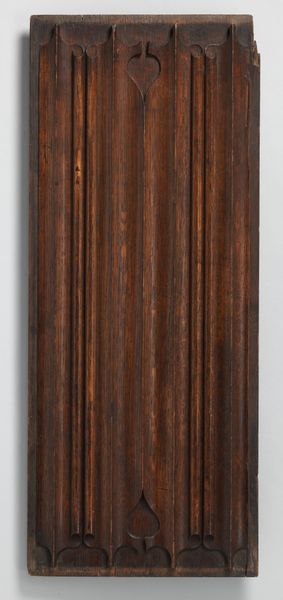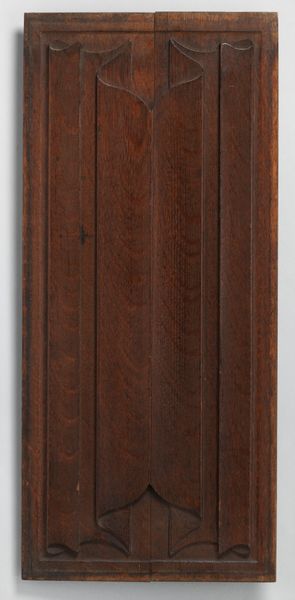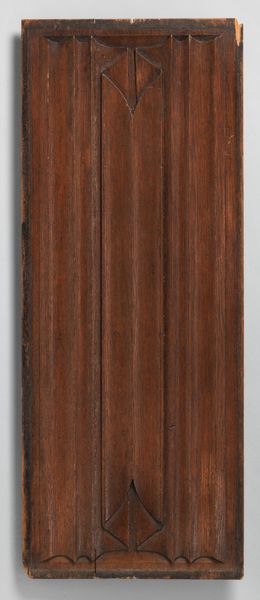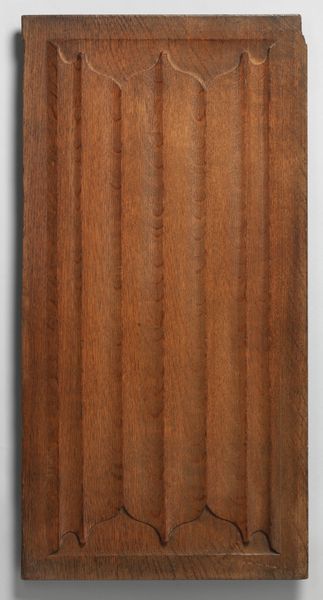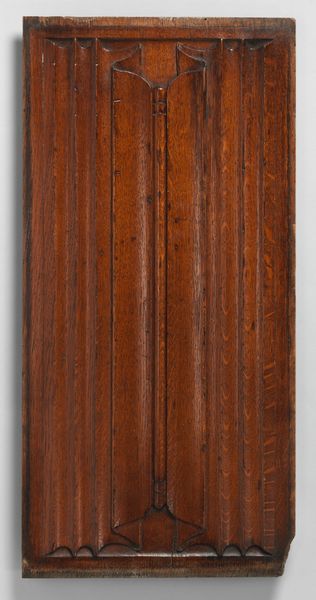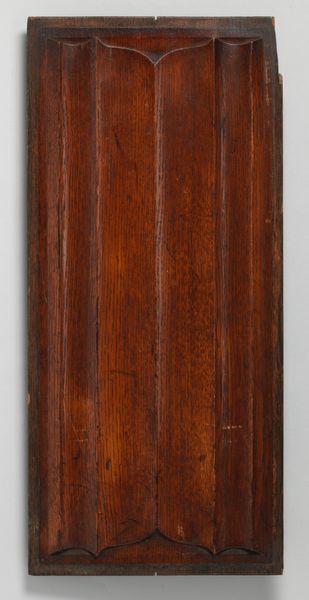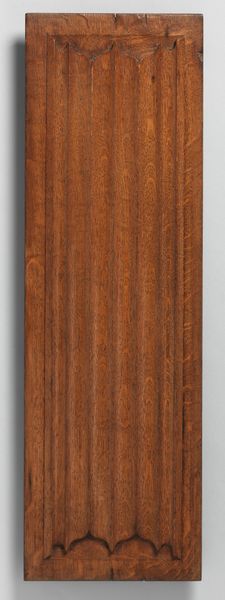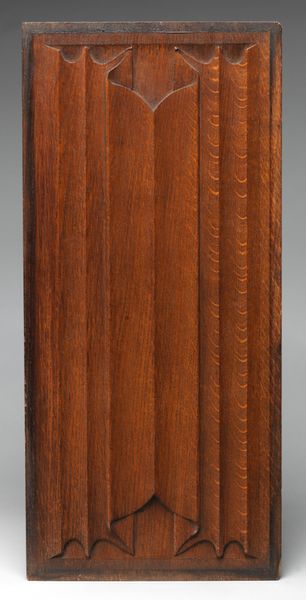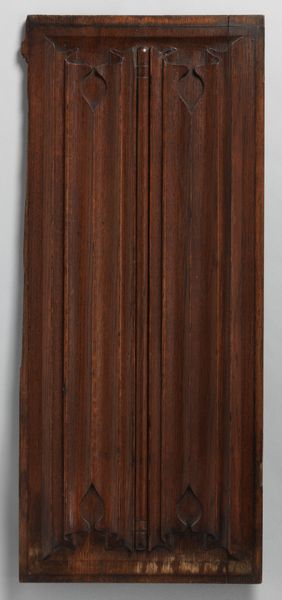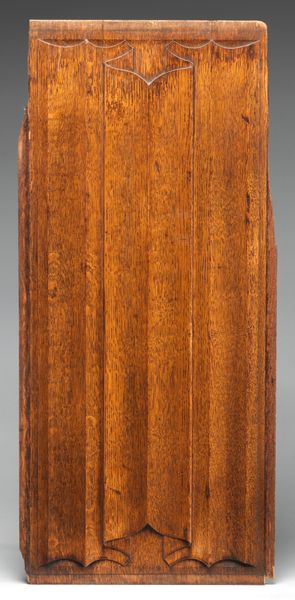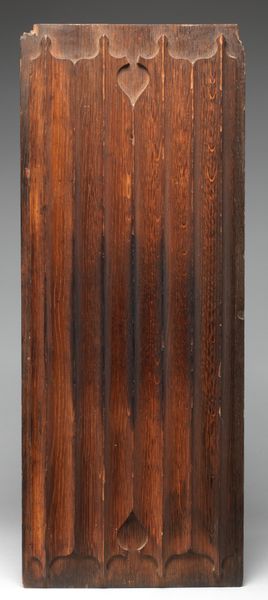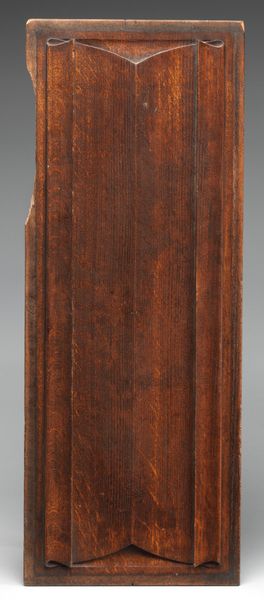
Decorative paneling from the Palace of Westminster 1840s - 1850s
0:00
0:00
Dimensions: Overall (confirmed): 23 13/16 × 12 1/8 × 5/8 in. (60.5 × 30.8 × 1.6 cm)
Copyright: Public Domain
This dark wooden panel was crafted by Augustus Welby Northmore Pugin for the Palace of Westminster. Note the subtle, pointed arch motif adorning the top and bottom of each of the three vertical panels. This architectural element speaks volumes, echoing the Gothic Revival style embraced during the 19th century. The pointed arch, a quintessential feature of Gothic architecture, symbolizes medieval spirituality, reaching towards the divine, which re-emerged as a visual and spiritual language during Pugin’s era. We observe this arch elsewhere: in the architecture of churches and cathedrals across Europe and in illuminated manuscripts. Interestingly, the arch form appears in Islamic architecture as well, suggesting a cross-cultural exchange of ideas throughout history. The pointed arch has evolved, appearing in various forms from grand cathedral entrances to subtle decorative motifs, embodying both sacred aspirations and secular tastes. The deliberate repetition of the pointed arch creates a sense of order, rhythm, and the sublime; its sharp angles hint at the emotional intensity of the Victorian era, engaging viewers at a subconscious level.
Comments
No comments
Be the first to comment and join the conversation on the ultimate creative platform.
